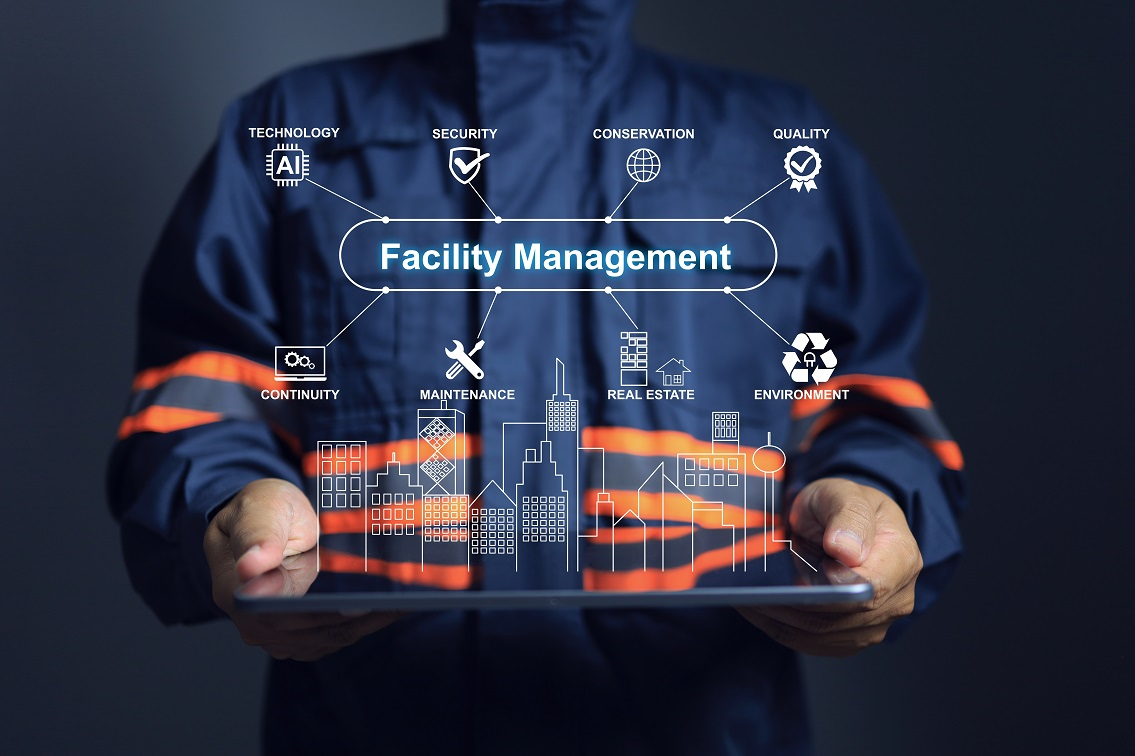Secret Patterns Shaping the Future of Center Administration in 2024
As we look in advance to 2024, the landscape of facility management is poised for significant change, driven by a number of key fads. The assimilation of smart building modern technologies and a shift towards data-driven decision-making guarantee to improve operational effectiveness while prioritizing sustainability in practice. The appearance of hybrid work versions is improving office environments, requiring innovative layout services that cater to advancing worker demands. Amidst these modifications, the focus on occupant wellness continues to acquire grip, emphasizing the significance of a healthy office. How these trends will show up in method continues to be an essential inquiry for industry specialists.
Smart Structure Technologies

Smart structure technologies include a wide selection of systems, including intelligent illumination, cooling and heating controls, and safety systems. By incorporating these systems, facility managers can keep track of and adjust criteria in real-time, leading to substantial reductions in energy waste and operational costs. As an example, wise sensors can discover occupancy levels and readjust illumination and temperature level appropriately, making certain that energy is just utilized when essential.
Moreover, these technologies promote boosted information collection, allowing organizations to track usage patterns and determine chances for more improvements. The application of clever building technologies not only adds to sustainability goals but additionally creates healthier workplace that can improve employee performance and fulfillment.
As we move right into 2024, the fostering of clever structure technologies will likely increase, reflecting a more comprehensive shift towards more intelligent, responsive, and lasting facility management practices.
Data-Driven Decision Making
Increasingly, organizations are leveraging data-driven choice making to boost center monitoring techniques. By using information analytics, center supervisors can derive workable understandings that significantly enhance operational performance and resource allotment. The integration of advanced innovations, such as IoT sensing units and real-time surveillance systems, allows the collection of vast quantities of data on building performance, tenancy rates, and energy consumption.
This wealth of info enables center supervisors to recognize trends, anticipate upkeep needs, and proactively address concerns prior to they rise. For example, predictive analytics can anticipate tools failures, reducing downtime and repair prices. Additionally, data visualization tools facilitate far better communication amongst stakeholders, ensuring that notified choices are made collaboratively.
Moreover, data-driven methods improve calculated planning by making it possible for center supervisors to analyze the efficiency of present methods and make notified choices relating to financial investments in modern technology or framework. As companies increasingly prioritize operational quality, data-driven choice making is poised to end up being a foundation of effective facility administration techniques in 2024 and past. Inevitably, the ability to leverage data properly will equip companies to create more effective, productive, and durable facilities.
Sustainability and Environment-friendly Practices
The focus on data-driven choice making naturally straightens with the growing concentrate on sustainability and environment-friendly methods within facility monitoring. As companies significantly prioritize environmental obligation, facility supervisors are leveraging analytics to enhance source usage, reduce waste, and lessen carbon impacts. This strategic strategy allows the combination of energy-efficient systems, such as LED lighting, smart a/c controls, and eco-friendly energy sources right into facility procedures.
Furthermore, the implementation of lasting techniques extends beyond energy consumption. Facility managers are advertising and taking on eco-friendly products reusing Bonuses initiatives to produce a round economic situation within their centers. This not just boosts the environmental profile of the organization yet also fosters a culture of sustainability among employees.
Conformity with environmental policies is another vital element driving the adoption of eco-friendly techniques. By using data analytics, center supervisors can monitor conformity metrics and recognize locations for improvement, making sure adherence to neighborhood and worldwide sustainability standards.
Hybrid Work Designs
A substantial change towards hybrid work designs is improving the landscape of center administration in 2024. This standard integrates remote and in-office work, requiring a reevaluation of room usage, resource allotment, and employee involvement techniques. Organizations are progressively identifying the significance of adaptable offices that satisfy varied demands and preferences.
Center managers must adapt by implementing functional office designs that support joint efforts while offering areas for focused job. This includes the combination of technology to facilitate smooth interaction and collaboration amongst remote and in-office workers. Smart building remedies, equipped with analytics and sensing units, permit real-time surveillance of area use, making it possible for companies to enhance their settings effectively.
Furthermore, hybrid work versions emphasize the demand for effective center management that focuses on worker experience. This encompasses not only innovation and room style however likewise the growth of plans that advertise a balanced work-life dynamic. As business navigate this change, the see post role of center monitoring ends up being essential in creating an active office that fosters productivity and drives business success. Fundamentally, the crossbreed job model is transforming facility administration, urging an aggressive strategy to satisfy the evolving needs of the labor force.
Improved Passenger Wellness
As organizations embrace hybrid work models, an enhanced emphasis on resident health is becoming indispensable to facility administration approaches. Facility Management. This change recognizes that a healthy and balanced and completely satisfied workforce directly influences efficiency and retention rates. Facility managers are currently prioritizing environments that promote mental and physical wellness, integrating elements such as all-natural illumination, biophilic layout, and accessible wellness resources

Technology plays a critical duty in this development. Smart structure systems can check environmental factors and readjust setups in real-time, making sure optimal convenience degrees - Facility Management. In addition, comments systems, such as tenancy sensing units and worker surveys, allow facility managers to continually fine-tune wellness efforts based upon owner requirements.

Verdict
In 2024, the future of facility management will be considerably influenced by the combination of clever building modern technologies and data-driven decision-making, promoting boosted operational effectiveness. These patterns jointly emphasize the evolving landscape of center management in feedback to contemporary difficulties and opportunities.
Facility supervisors are embracing environment-friendly products and advertising recycling campaigns to produce a round economic climate within their centers.A read what he said substantial shift towards crossbreed job designs is improving the landscape of center monitoring in 2024.In addition, crossbreed job designs highlight the requirement for efficient facility monitoring that prioritizes staff member experience.As companies embrace hybrid work versions, an enhanced emphasis on occupant health is ending up being essential to center administration strategies.In 2024, the future of center monitoring will certainly be substantially influenced by the integration of clever building innovations and data-driven decision-making, fostering enhanced functional effectiveness.